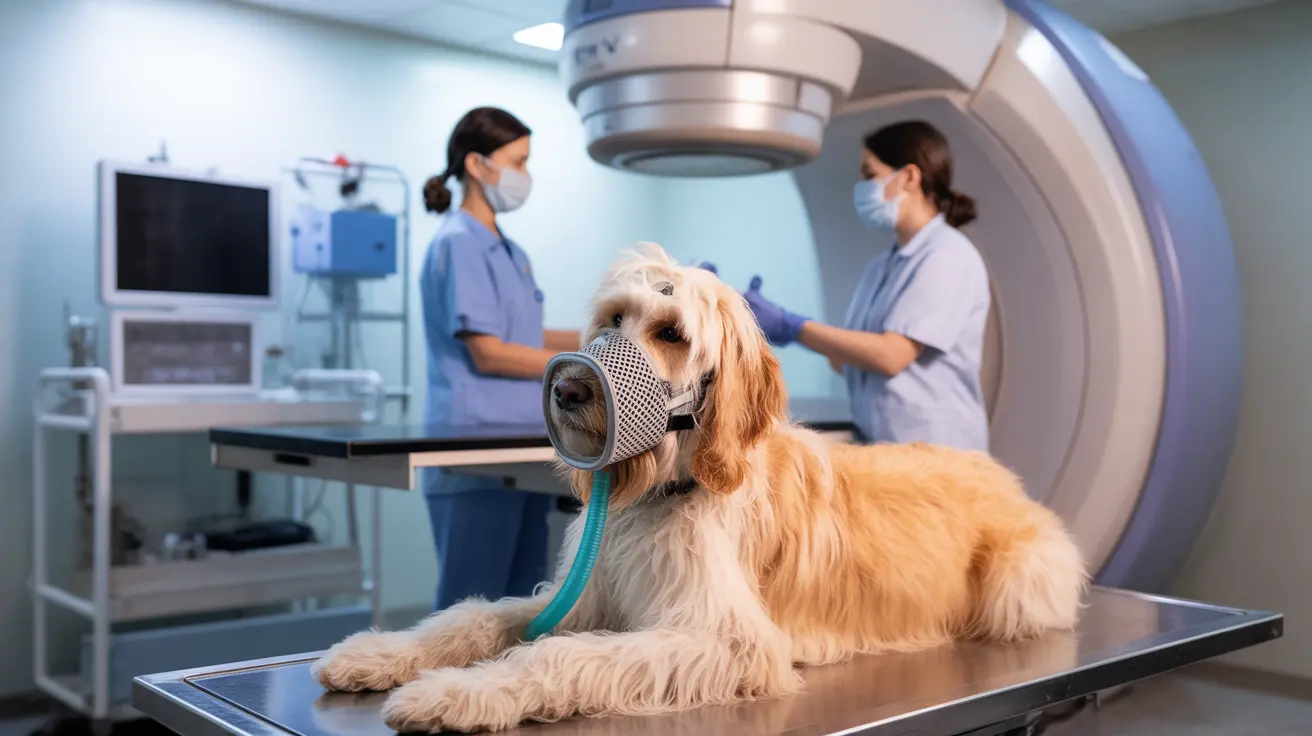Understanding Congestive Heart Failure in Dogs
Congestive heart failure (CHF) in dogs isn't a single disease but a clinical syndrome that signals advanced heart dysfunction. When a dog's heart can't pump blood efficiently enough to meet the body's demands, fluid accumulates in places it shouldn't—most commonly the lungs (pulmonary edema) or abdomen (ascites). This condition develops as a consequence of underlying heart disease, and its progression can be slow or, sometimes, alarmingly rapid.
How Does CHF Develop?
The canine heart has two sides: the left side collects oxygen-rich blood from the lungs and pumps it to the body, while the right side receives oxygen-poor blood and sends it to the lungs for oxygenation. If the left side fails (left-sided CHF), blood backs up into the lungs, causing pulmonary edema. Right-sided CHF leads to fluid build-up in the abdomen and sometimes swelling of limbs. Some dogs experience both—this is called biventricular failure.
Main Causes of CHF
- Mitral valve insufficiency (leaky valve disease): Most common in small to medium breeds.
- Dilated cardiomyopathy (DCM): More prevalent in large or giant breeds.
- Congenital defects: Patent ductus arteriosus, septal defects.
- Heartworm disease.
- Infections: Endocarditis.
- Arrhythmias and pericardial diseases.
- Nutritional deficiencies.
Certain breeds are at higher risk. For example, Cavalier King Charles Spaniels, Chihuahuas, Dachshunds, Maltese, Miniature Poodles, Miniature Schnauzers, and Shih Tzus often develop mitral valve disease. Doberman Pinschers, Boxers, Great Danes, Irish Wolfhounds, Golden Retrievers, and Labrador Retrievers are more susceptible to DCM.
Symptoms: What Should You Watch For?
The early stages of CHF can be sneaky—dogs might show few or no outward symptoms. A veterinarian may pick up on subtle clues during routine exams (like a new heart murmur). As CHF progresses, signs become more obvious:
- Coughing (persistent or worse at night/rest)
- Shortness of breath; rapid/labored breathing
- Lethargy; exercise intolerance; fatigue
- Fainting or collapse; general weakness
- Swollen abdomen from fluid build-up
- Pale or blue-tinged gums/tongue
- Poor appetite; weight loss; muscle wasting
You might also notice your dog pacing at bedtime or sleeping in odd positions to breathe more easily. Crackling lung sounds may be heard with a stethoscope if there's fluid accumulation.
The Stages of CHF
- Stage A: High risk but no symptoms or structural changes yet.
- Stage B: Murmur present but still no symptoms.
- Stage B2: Structural changes detected; still asymptomatic.
- Stage C: Clinical signs of heart failure appear.
- Stage D: End-stage disease; symptoms persist despite treatment.
Diagnosing CHF in Dogs
- Auscultation: Detects murmurs/rhythm issues via stethoscope.
- X-rays: Show heart size/shape and presence of lung fluid.
- Echocardiogram: Ultrasound for detailed assessment of structure/function.
- ECG/EKG: Checks electrical activity and rhythm abnormalities.
- Bood/urine tests: Evaluate organs affected by poor circulation or medication side effects.
An NT-proBNP test may help confirm CHF when needed. If heartworm is suspected, specific antigen testing is done. At home, monitoring your dog's resting breathing rate can alert you to worsening CHF—a rate over 30 breaths per minute at rest should prompt a call to your vet.
Treatment & Management Strategies
No cure exists for most forms of CHF due to valvular or muscle disease. However, treatment can dramatically improve quality of life and extend survival time. The mainstays include:
- Diuretics (furosemide/torsemide/spironolactone): Remove excess fluid from lungs/abdomen.
- Ace inhibitors (enalapril/benazepril): Lower blood pressure and reduce cardiac workload.
- Pimobendan: Strengthens contractions and opens up vessels for easier blood flow.
Your vet might also prescribe vasodilators or beta-blockers as needed for rhythm control. Dietary changes—especially reduced sodium intake—and weight management play key roles too. Supplements like taurine or L-carnitine may be recommended for certain cases but always check with your veterinarian first before adding anything new to your dog's diet.
Lifelong Monitoring Is Essential
Treatment is usually lifelong. Regular check-ups are crucial because medications can affect kidney function and electrolytes—doses may need adjustment over time. Owners should regularly monitor for any worsening coughs, labored breathing, sudden collapses, or blue gums/tongue—all signs that warrant immediate veterinary attention.
Lifespan & Prognosis
The outlook depends on what's causing CHF and how advanced it is when diagnosed. Many dogs live comfortably for months—or even years—with proper care after diagnosis. Early detection and intervention make a big difference; end-stage CHF focuses on comfort rather than cure as symptoms become unmanageable despite therapy.
Prevention & Reducing Risk
- Semiannual veterinary exams catch problems early—even before symptoms start showing up at home! < li >Keep your dog at a healthy weight . < li >Feed balanced diets ; avoid unnecessary grain - free restrictions unless advised . < li >Maintain oral health ; dental infections can lead to endocarditis . < li >Use parasite prevention , especially against heartworm . < p >Dogs with inherited/congenital cardiac conditions shouldn 't be bred . Remember : CHF isn 't contagious — other pets and people are safe . < h3 >Key Takeaways < ul >< li >CHF most often results from mitral valve disease or DCM . < li >Early signs are subtle ; they worsen over time if untreated . < li >Diagnosis relies on physical exams , imaging , and lab tests . < li >Treatment focuses on symptom relief , slowing progression , and maintaining comfort . < li >With attentive care , many dogs enjoy good quality lives even after diagnosis .





